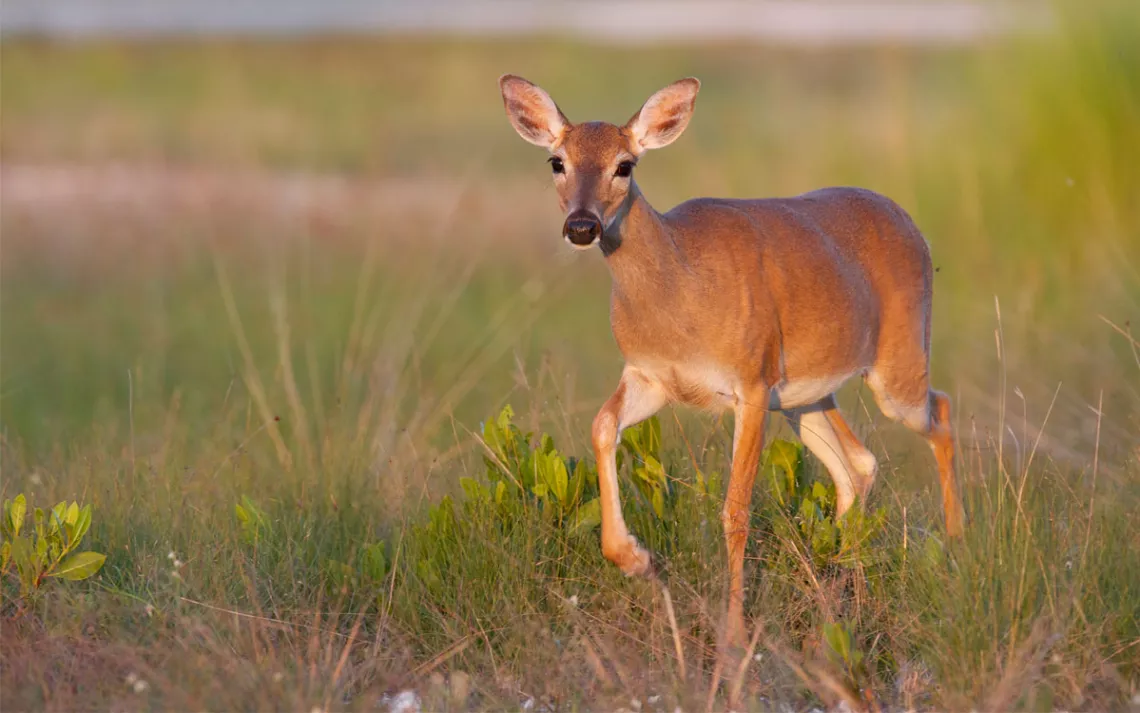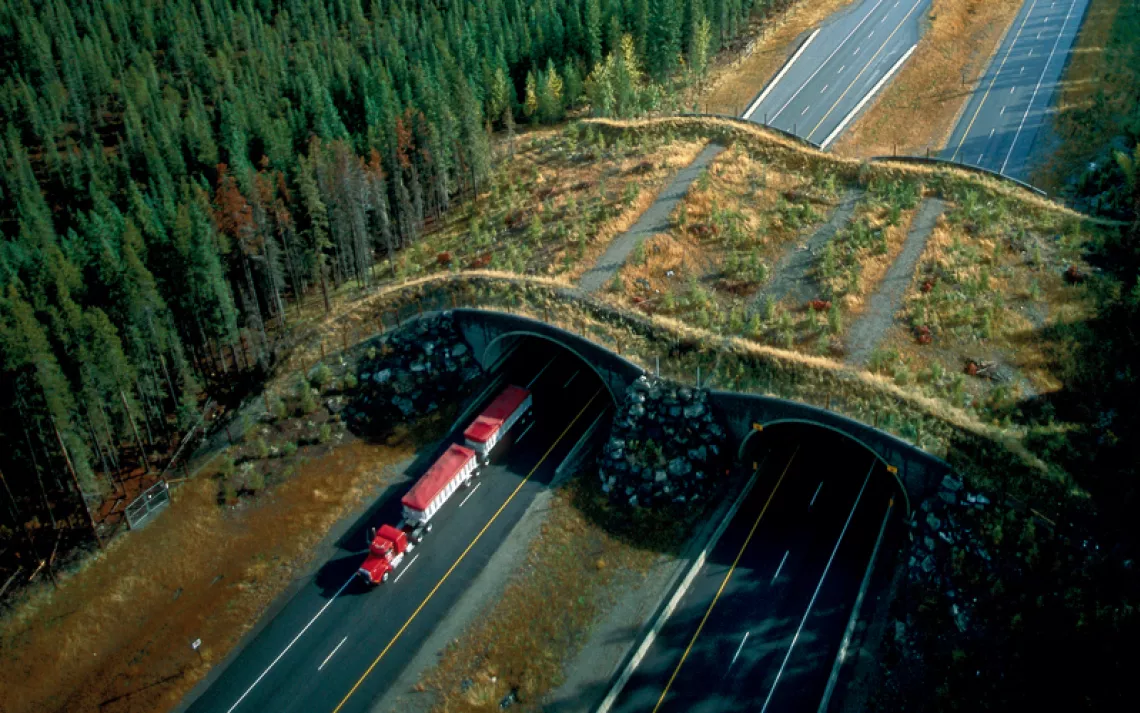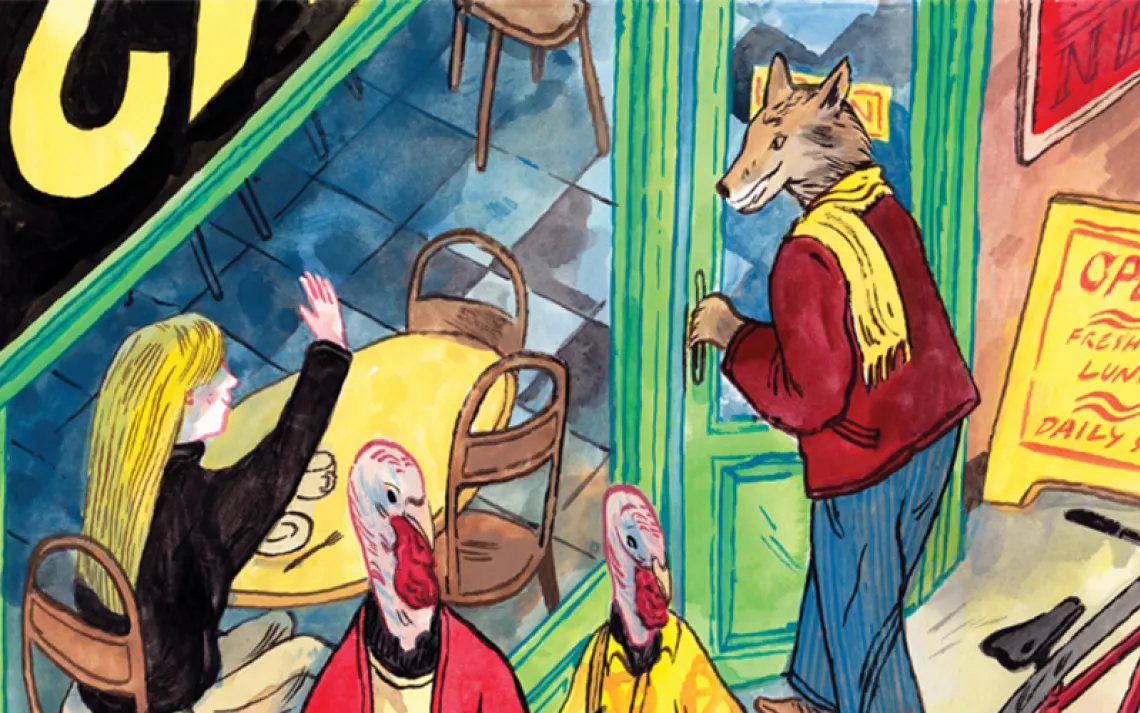Assisted Migration Helps Animals Adapt to Climate Change
New federal regulations require rethinking our approach to conservation

An endangered key deer in the Florida Keys. | Photo by Moose Henderson/iStock
Last year, more than 100 million people were forced to flee their homes following climate-related disasters. Extreme heat and weather are shifting the areas fit for habitation—and not just for humans. Climate change is turning other vulnerable species into refugees as well.
Elise Bennett, a lifelong Floridian and senior attorney at the Center for Biological Diversity, is confronted with this reality on a daily basis. Bennett works with the center’s Florida and Caribbean program, where she advocates for endangered species whose habitats are being eaten away by climate change.
One of those species is the key deer (Odocoileus virginianus clavium). Reddish-brown and around the size of a golden retriever, only about 1,000 remain in the wild. As sea levels rise and saltwater intrudes on the island forests they call home, these diminutive deer are quickly running out of real estate, Bennett said. The last desperate hope might be to move them off their native islands before they’re swallowed by the sea, Atlantis-style. Unfortunately, wildlife officials haven’t been able to relocate the deer to new areas because the Endangered Species Act prohibited it.
But a recently updated federal regulation just put that option on the table. In July, the US Fish and Wildlife Service changed its policy around the practice of “assisted migration”—a controversial strategy that involves moving an endangered species to a new area (often outside of its historic range) when its native habitat becomes too hot, too dry, too salty, or otherwise unsuitable to live in. Specifically, the FWS removed the so-called historic range clause in section 10 of the Endangered Species Act. The update effectively means that wildlife officials might be able to relocate the key deer and species like it to new, more suitable habitats. But doing so may prove physically and ethically tricky—and it may require us to rethink our current conservation paradigm.
Assisted migration, also known as conservation introduction, managed relocation, and “helping forests walk,” is contested in part because it goes against the ethos that most US conservation policy is rooted in. “Our laws are set up in a way that sort of assumes nature is static,” said Alejandro Camacho, an environmental policy expert at the University of California, Irvine.
Under the Endangered Species Act, a given plant or animal is protected within its “historic range”—the area in which the species has been scientifically documented. However, these boundaries are squishy; most rely on less than 150 years of patchy data, and many amount to an educated guess. But writing them into law codifies a baked-in set of assumptions about where certain plants and animals belong—and where they don’t.
In reality, Camacho said, ecosystems are in a constant state of flux. Species move in and out depending on the season, the food supply, physical barriers like roads and rivers, and shifting patterns of precipitation and temperature.
This has been true for millions of years. Long before humans evolved, spread out, and started writing scientific papers, plants and animals were roaming all across the North American continent in search of suitable habitats as glaciers encroached and then retreated. Today, climate change is forcing them to move again. Many species, including bears, ground squirrels, and even mangroves, are shifting their ranges higher, both in latitude and elevation, without human aid as the planet warms, mingling with new groups of organisms.
“What we’ll be increasingly seeing is the development of novel species assemblages and novel ecosystems,” Christopher Swanston, a climate adviser at the US Forest Service, said. “Ones that we sometimes haven’t imagined and certainly haven’t seen.”
The breathtaking pace of our current climate catastrophe, however, means some species can’t keep up on their own. “You can’t both keep things the way they used to be and not intervene in a world of climate change,” Camacho said. Trees like the endangered Florida torreya (Torreya taxifolia), for example, can’t just uproot themselves and migrate to cooler climes—which is where assisted migration comes in. A small but dedicated group of volunteers has been planting seeds from this slow-growing southern conifer in western North Carolina and Georgia since 2008, taking pains to place them on private property to avoid breaking the law (technically, it is legal to plant non-native flora in one’s own yard, so long as the species isn’t considered invasive). So far, the trees seem to be thriving.
But not every expert is ready to plunge headfirst into species relocation. “It’s too easy to go too hastily into some of these activities,” said Mark Schwartz, a conservation scientist at the University of California, Davis.
In ecological circles, one of the main concerns around assisted migration is that a freshly relocated species might get out of control and become an invasive presence in its new habitat. While this risk is much lower for organisms and ecosystems that share a continent (as opposed to those brought over from across the ocean), it has happened in rare cases. For example, rusty crayfish (Faxonius rusticus), which are native to the Ohio River Basin, began pushing out native crustaceans in parts of Wisconsin and Minnesota after fishers started using them as live bait.
The other big concern is that a transplanted species might fail to thrive in its new range. Certain organisms—so-called narrow endemics—only exist in highly specific locations, such as a single lake or valley. Sometimes, these species are even named after the places in which they’re found—Florida’s key deer is one such example.
Some conservationists worry that removing these plants and animals from their ecological context would fundamentally alter their evolutionary trajectory or even hasten their extinction. Key deer, for instance, might begin hybridizing with white-tailed deer on the mainland. Or they might be wiped out by diseases absent from the islands. It raises the philosophical quandary: What is the key deer if it no longer lives in the Florida Keys?
In some ways, “you’re robbing them of their very nature,” said Patrick Donnelly, the Great Basin program director with the Center for Biological Diversity. Still, he conceded, for certain species, “moving them as opposed to just watching them go extinct seems to be the least bad option.”
If the key deer gets approved for assisted migration, it won’t happen overnight. “It’s probably going to be incremental and extremely cautious,” Bennett said. The whole process might take years or even decades. And ultimately, relocating species should be seen as a last resort, not a first line of defense.
“Is it practical? Probably not,” Bennett said. “But it is good to be thinking about the future and to have these options open.”
 The Magazine of The Sierra Club
The Magazine of The Sierra Club






